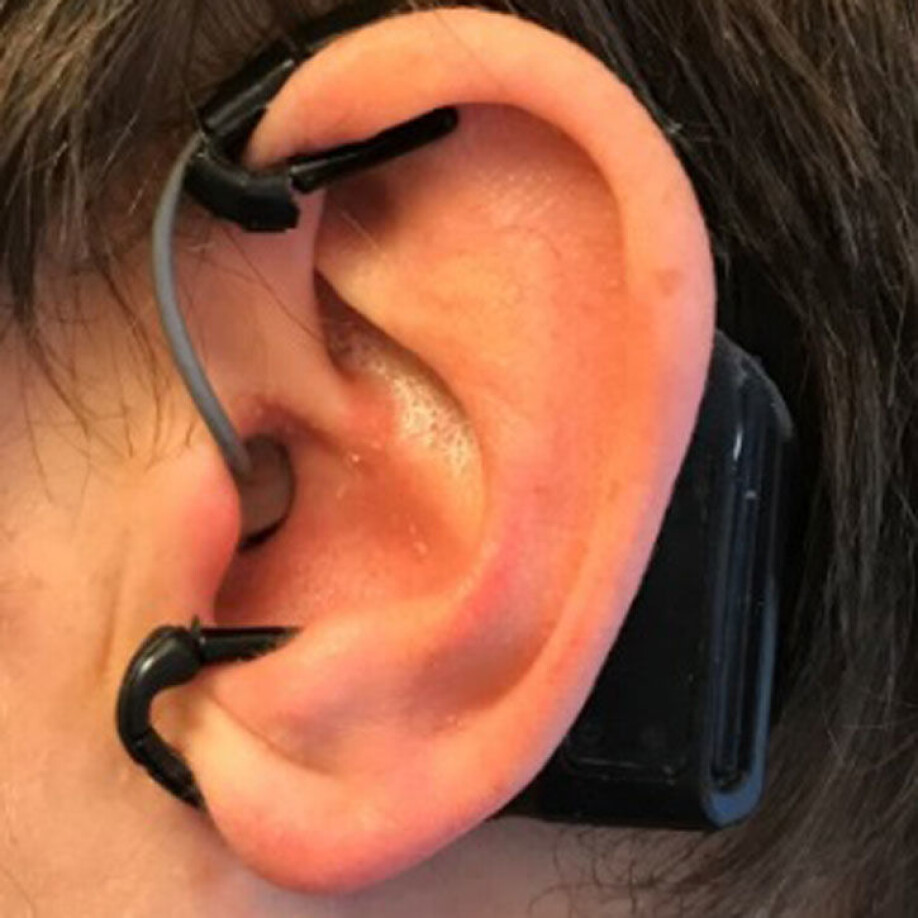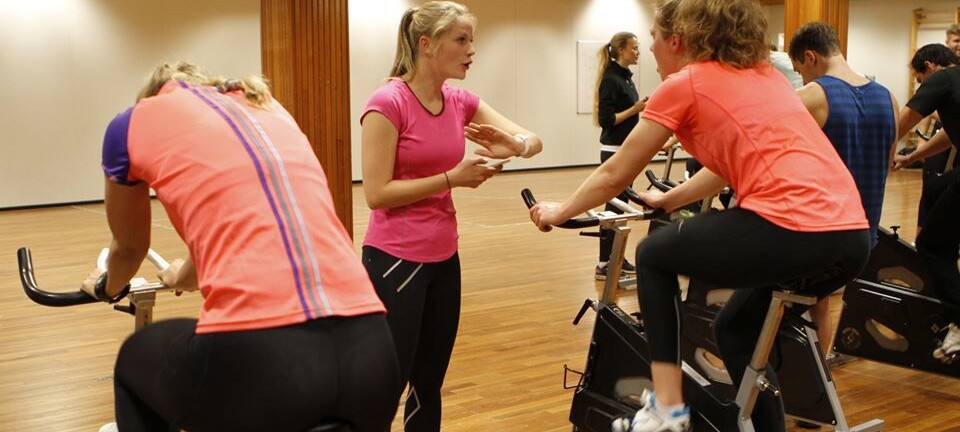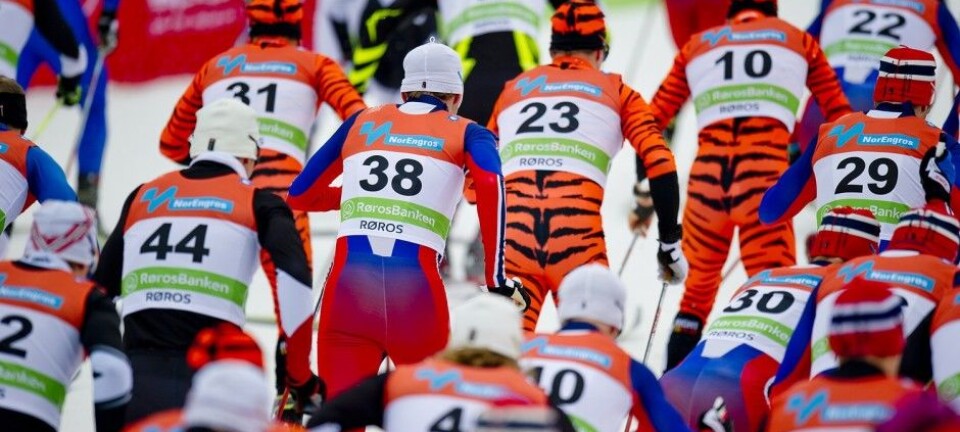This article was produced and financed by The Norwegian School of Sport Sciences - read more

Footballers get head injuries, but how much is this due to heading?
A number of ex-footballers have suffered serious injuries. Stian Bahr Sandmo is investigating the extent to which heading can be blamed. “If football were invented today, it would surprise me if heading were allowed to such an extent.”
Some tragic stories about famous footballers have emerged in recent years. They have all spent many years on the pitch, with countless tackles and headers. And many of them talk about injuries making them more or less disabled, with injuries such as failing concentration and memory, dizziness, chronic headaches and, eventually, advanced dementia.
“Injuries like this mean huge problems for each individual, their families and society,” says Stian Bahr Sandmo.
Stricter rules

Although the link between heading and brain damage has not yet been scientifically proven, a number of football organisations have already introduced rules to prevent more. They know from other contact sports and from studies of repeated concussions that there is a connection between repeated blows to the head and the injuries many people suffer from.
“However, it is not completely simple to determine how harmful heading alone is. There are factors other than heading that affect brain function, such as knocks in connection with tackles, off-the-field incidents, the use of alcohol or other drugs,” he explains.
Similarly: At what point does heading do damage?
“This is exactly what we are trying to find out, not least because so many people play football, and over a long period of time.”
He also thinks that methods of prevention, i.e. the best way avoid potentially damaging activities, are not entirely obvious. For example, there is widespread doubt that a ban, as introduced in the United States (as early as 2015) and the UK for children under 10 and 12 years of age, actually has much effect – even though children are more vulnerable to injury than adults.
We'll come back to that.
Spoke during the Norway Cup
As mentioned, in his PhD, Stian Bahr Sandmo has mostly worked with one indicator: How do you measure the effect of heading? And should each impact be measured, or the overall combined effect?
“You can’t reach a meaningful conclusion about the effects of heading until you have a good way of measuring them.” It's that simple and that difficult, he says – and talks about everything from instruments to measure the strength of each impact, to a questionnaire about how players experienced the impacts, both individually and together.
“You also have to establish the extent to which heading is normal for different age groups. It’s only then that you can interpret results, compile statistics and recommend preventive measures,” he continues.
To create a benchmark, Sandmo and his colleagues talked about heading at the Norway Cup in 2018, and put it in the light of the ban in the USA. It turned out, among other things, that children under the age of 10 barely head the ball. In fact, they only start heading when they reach the age of 13-14.
“With that in mind, a ban such as they have in the USA can easily be seen as symbolic.”
Blows build up
In addition, Sandmo has investigated specific examples of brain damage from heading.

From studies of concussions, we know that:
- Impacts of a certain strength cause shock damage to the brain, as with other tissues.
- Impacts of a certain strength lead to transient disturbances in electrical processes in the brain and sometimes to diffuse damage to the nerve fibres.
- The damage depends on the acceleration forces in motion and how these affect different areas of the brain.
- It is difficult to determine the exact damage caused by the impact or accident.
- Children are more vulnerable than adults, and girls are slightly more vulnerable than boys.
- Repeated injuries can have an cumulative effect, i.e. the injuries compound each other – just as with sunbathing, smoking or exposure to solvents – but there are major differences from person to person.
“The brain has a fantastic ability to let new areas take over from damaged areas, but the greater the injury, the more difficult this becomes,” he says.
Serious consequences
And the long-term effects often depend on the “collection” of impacts. Here, a distinction is often made between
- prolonged headaches, dizziness and difficulty concentrating (also called “post-concussion syndrome”).
- Neuro-degenerative diseases such as Alzheimer's, Parkinson's, ALS, CTE. Several of these have “dementia” as their final stage, a condition that can only be treated to a small extent, and sufferers are never the same again.
Sandmo and a group of colleagues have completed two studies in connection with the thesis:
In RepImpact, they examined the brains of 14-17-year-olds using techniques including MRI to look for injuries after heading. The results of this are not complete.
In the second study, they looked at heading and head injuries among players in the top Norwegian league. Using blood tests, they measured the level of, among other things, tau protein.
Tau protein has an important role inside the nerve cells, but the more of it you find “loose” outside the cells after a head impact, the greater the structural damage you can assume that the brain has been exposed to.
Furthermore, when damaged tau protein breaks down and accumulates inside the cells, it causes damage there. This accumulation can, among other things, cause chronic inflammatory reactions and contribute to the development of serious disorders, such as CTE and Alzheimer's.
Uncertain how much has an effect
“We could study the incidence of structural brain injuries and whether they were due to (1) a training session with a lot of heading and/or (2) head injuries in a match,” he explains.
But they found no structural damage, i.e. no visible damage.
“Nevertheless, this does not necessarily paint the whole picture. The measurements are far from perfect, and studies must also be carried out using MRI or other high-tech methods,” says Sandmo.
The amount of these proteins is therefore not a precise measure. Studies in American football and boxing have shown these connections in the past, but the head injuries are different to those in football. “So we don’t know enough about what it takes.”
Wants to protect players
“There are a lot of indications that both American football and boxing are considerably more risky. In several ways, they go in harder, with relatively frequent concussions. However, it is still important to learn about the risk of repeated, lighter head impacts, such as heading.”
“But as time goes on, is there a risk that more and more people will be injured? Is the answer to ban heading?”
“That’s for others to decide, but there are many options,” says Sandmo.
He points out that in principle it would be easy to stop heading. On the other hand, football is a massive sport, so it's not realistic to change the sport overnight.
In any case, he thinks it would make sense to start with rules that as many people as possible can and will obey, such as rule changes to reduce head injuries. As with high elbows, which already lead to a red card and have led to a reduction in head injuries.
“Players who receive a blow to the head must be thoroughly examined by health professionals, and they have to be given ample time for their examinations. Here, the “when in doubt, sit them out” principle applies. There has been some carelessness here.
He says that injured players must also be monitored closely afterwards, so that they can return gradually to the sport in a controlled manner.
“Another solution that has been discussed is to allow an extra substitution if someone has to go off with a suspected head injury. It could ease the pressure on coaches, health professionals and the players themselves.”
These debates are already in full swing within a number of major football organisations. This has been on the agenda recently, particularly in England.
Unlikely to be allowed
Either way, Stian Bahr Sandmo thinks it is important to put it all in perspective.
“You should bear in mind that there are also a lot of positive things about football, not least as a source of physical activity and socialising.”
In the Scottish study, where a greater incidence of brain damage in ex-footballers was observed, there were some important positive aspects: They lived longer, with fewer instances of cardiovascular diseases and lung cancer.
“Either way, it’s an interesting thought, that if football were introduced today, with what we now know, then I would be surprised if heading in its current form – which we are all so used to today – were allowed.”
Reference:
Stian Bahr Sandmo: Repetitive head impacts in football - Quantifying exposure and assessing outcomes. Doctoral dissertation at the Norwegian School of Sport Sciences , 2020. The dissertation (in norwegian)


































